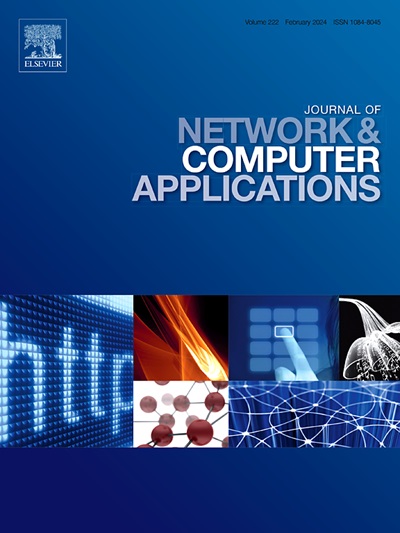无人机群网络的鲁棒轻量级互认证方案
IF 8
2区 计算机科学
Q1 COMPUTER SCIENCE, HARDWARE & ARCHITECTURE
引用次数: 0
摘要
无人机越来越多地应用于军事和商业领域,用于远程渲染、监控、监视和服务交付操作。无人机群由多架无人机组成,作为一个统一的系统内聚运行,提供集体服务。蜂群中的每架无人机都必须与其他无人机建立相互信任,以确保数据交换的真实性,并防止任务妥协。无人机间的通信链路容易受到网络威胁,包括未经授权的访问和欺骗。虽然大多数现有研究都集中在无人机固定基站的认证机制上,但很少有研究工作探索专门为分散拓扑设计的无人机间认证协议。我们提出了一种用于无人机间通信的轻量级认证方案,该方案利用动态挑战-响应机制、基于哈希的消息认证码和经过认证的加密来促进相互认证。我们通过基于Dolev-Yao和Canetti-Krawczyk威胁模型的广泛非正式分析以及基于Scyther和随机预言的形式分析验证了所提出协议的有效性。我们还将该协议的性能与最先进的认证方案进行了比较,以证明其有效性和效率。结果表明,该协议在低成本的无人机群威胁防御方面具有优势。本文章由计算机程序翻译,如有差异,请以英文原文为准。
Robust and lightweighted mutual authentication scheme for drone swarm networks
Drones are being increasingly adopted across both military and commercial domains to serve remote rendering, monitoring, surveillance and service delivery operations. Drone swarms comprise multiple drones operating cohesively as a unified system to provide collective services. Each drone in a swarm must establish mutual trust with other drones to ensure authenticity in data exchange and also to prevent the compromise of a mission. Inter-drone communication links are vulnerable to cyber threats, including unauthorized access and spoofing. While most existing studies focus on authentication mechanisms for drone-to-stationary base stations, very little research work has explored inter-drone authentication protocols specifically designed for decentralized topologies. We propose a lightweight authentication scheme for inter-drone communication that leverages a dynamic challenge–response mechanism, hash-based message authentication code and authenticated encryption to facilitate mutual authentication. We validate the efficacy of the proposed protocol through extensive informal analysis based on the Dolev–Yao and the Canetti–Krawczyk threat models and through Scyther and random oracle-based formal analysis. We also compare the protocol’s performance with state-of-the-art authentication schemes to demonstrate its efficacy and efficiency. The results obtained demonstrate the supremacy of the protocol in cost-effective threat prevention for swarms of drones.
求助全文
通过发布文献求助,成功后即可免费获取论文全文。
去求助
来源期刊

Journal of Network and Computer Applications
工程技术-计算机:跨学科应用
CiteScore
21.50
自引率
3.40%
发文量
142
审稿时长
37 days
期刊介绍:
The Journal of Network and Computer Applications welcomes research contributions, surveys, and notes in all areas relating to computer networks and applications thereof. Sample topics include new design techniques, interesting or novel applications, components or standards; computer networks with tools such as WWW; emerging standards for internet protocols; Wireless networks; Mobile Computing; emerging computing models such as cloud computing, grid computing; applications of networked systems for remote collaboration and telemedicine, etc. The journal is abstracted and indexed in Scopus, Engineering Index, Web of Science, Science Citation Index Expanded and INSPEC.
 求助内容:
求助内容: 应助结果提醒方式:
应助结果提醒方式:


